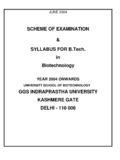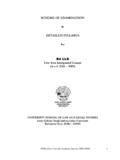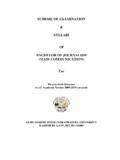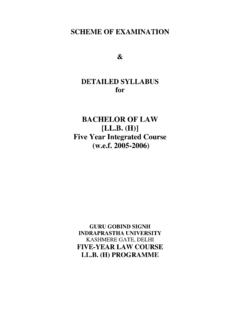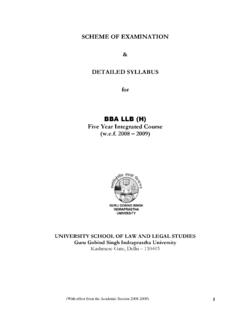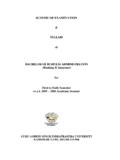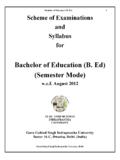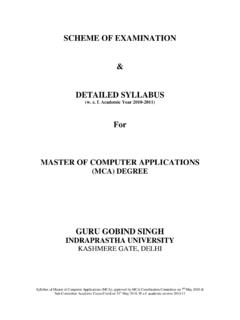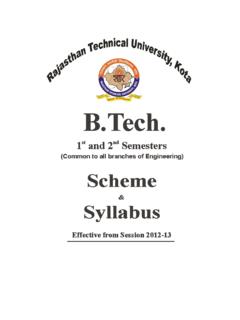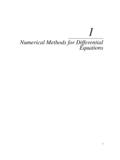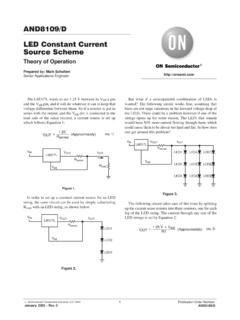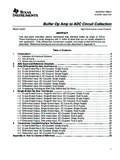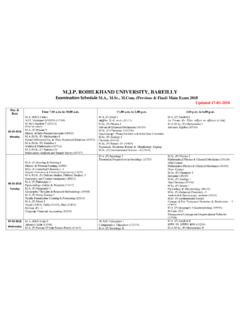Transcription of SCHEME OF EXAMINATION DETAILED SYLLABUS for
1 Effective from academic session 2007-08 SCHEME OF EXAMINATION & DETAILED SYLLABUS for BACHELOR OF TECHNOLOGY ( ) DEGREE GURU gobind singh INDRAPRASTHA UNIVERSITY KASHMERE GATE, DELHI-110 403 Effective from academic session 2007-08 BACHELOR OF TECHNOLOGY ( ) DEGREE COURSE (Common to all branches) FIRST SEMESTER EXAMINATION Code No. Paper L T/P Credits THEORY PAPERS ETMA 101 Applied Mathematics I 3 1 4 ETPH 103 Applied Physics I 2 1 3 ETCH 105 Engineering Chemistry 2 1 3 ETME 107 Manufacturing Process 2 0 2 ETCS 109 Introduction to Computers and Auto CAD 2 1 3 ETEL 111 Communication Skills I 2 1 3 ETEL 113* Impact of Science & Technology on Society 1 0 1 PRACTICAL/VIVA VOCE ETPH 151 Applied Physics Lab. I - 2 1 ETCH 153 Engineering Chemistry Lab. - 2 1 ETCS 155 Introduction to Auto CAD Office Automation and Web Design - 3 2 ETME 157 Workshop Practice - 3 2 ETME 159 Engineering Graphics Lab.
2 - 2 1 TOTAL 14 17 26 ETEL-113* is NUES Effective from academic session 2007-08 BACHELOR OF TECHNOLOGY ( ) DEGREE COURSE (Common to all branches) SECOND SEMESTER EXAMINATION Code No. Paper L T/P Credits THEORY PAPERS ETMA 102 Applied Mathematics II 3 1 4 ETPH 104 Applied Physics II 2 1 3 ETCH 106 Environmental Studies 2 1 3 ETCS 108 Introduction to Programming 2 1 3 ETME 110 Engineering Mechanics 2 1 3 ETEC 112 Electrical Science 2 1 3 ETEL 114 Communication Skills II 2 1 3 PRACTICAL/VIVA VOCE ETPH 152 Applied Physics Lab. II - 2 1 ETCH 154 Environmental Studies Lab. - 2 1 ETCS 156 C Programming Lab. - 2 1 ETME 158 Engineering Mechanics Lab. - 3 2 ETEC 160 Electrical Science Lab. - 2 1 TOTAL 15 18 28 Effective from academic session 2007-08 Paper Code: ETMA-101 L T C Paper: Applied Mathematics I 3 1 4 INSTRUCTIONS TO PAPER SETTERS: MAXIMUM MARKS: 75 1. Question No.
3 1 should be compulsory and cover the entire SYLLABUS . This question should have objective or short answer type questions. It should be of 25 marks. 2. Every unit should have two questions. However, student may be asked to attempt only 1 question from each unit. Each question should be of marks. UNIT I COMPLEX NUMBERS AND INFINITE SERIES: De Moivre s theorem and roots of complex numbers. Euler s theorem, Logarithmic Functions, Circular, Hyperbolic Functions and their Inverses. Convergence and Divergence of Infinite series, Comparison test d Alembert s ratio test. Higher ratio test, Cauchy s root test. Alternating series, Lebnitz test, Absolute and conditioinal convergence. (No. of Hrs. 10) UNIT II CALCULUS OF ONE VARIABLE: Successive differentiation. Leibnitz theorem (without proof) McLaurin s and Taylor s expansion of functions, errors and approximation.
4 Asymptotes of Cartesian curves. Curveture of curves in Cartesian, parametric and polar coordinates, Tracing of curves in Cartesian, parametric and polar coordinates (like conics, astroid, hypocycloid, Folium of Descartes, Cycloid, Circle, Cardiode, Lemniscate of Bernoulli, equiangular spiral). Reduction Formulae for evaluating Finding area under the curves, Length of the curves, volume and surface of solids of revolution. (No. of Hrs. 15) UNIT III LINEAR ALGEBRA MATERICES: Rank of matrix, Linear transformations, Hermitian and skeew Hermitian forms, Inverse of matrix by elementary operations. Consistency of linear simultaneous equations, Diagonalisation of a matrix, Eigen values and eigen vectors. Caley Hamilton theorem (without proof). (No. of Hrs. 09) UNIT IV ORDINARY DIFFERENTIAL EQUATIONS: First order differential equations exact and reducible to exact form.
5 Linear differential equations of higher order with constant coefficients. Solution of simultaneous differential equations. Variation of parameters, Solution of homogeneous differential equations Canchy and Legendre forms. (No. of Hrs. 10) Text books: 1. Kresyzig, E., Advanced Engineering Mathematics , John Wiley and Sons. (Latest edition). 2. Jain, R. K. and Iyengar, S. R. K., Advanced Engineering Mathematics , Narosa, Effective from academic session 2007-08 2003 (2nd Ed.). 3. Advanced Engineering Mathematics , Dr. A. B. Mathur, V. P. Jaggi (Khanna publications) References books: 1. Mitin, V. V.; Polis, M. P. and Romanov, D. A., Modern Advanced Mathematics for Engineers , John Wiley and Sons, 2001. 2. Wylie, R., Advanced Engineering Mathematics , McGraw-Hill, 1995. Effective from academic session 2007-08 Paper Code: ETPH 103 L T C Paper: APPLIED PHYSICS I 2 1 3 INSTRUCTIONS TO PAPER SETTERS: MAXIMUM MARKS: 75 1.
6 Question No. 1 should be compulsory and cover the entire SYLLABUS . This question should have objective or short answer type questions. It should be of 25 marks. 2. Every unit should have two questions. However, student may be asked to attempt only 1 question from each unit. Each question should be of marks. UNIT I Interference of Light: Interference due to division of wavefront and division of amplitude, Young s double slit expt., Interference, Principle of Superposition, Theory of Biprism, Interference from parallel thin films, wedge shaped films, Newton rings, Michelson interferometer. Diffraction: Fresnel Diffraction, Diffraction at a straight edge, Fraunhoffer diffraction due to N slits, Diffraction grating, absent spectra, dispersive power of Grating, resolving power of prism and grating. (No. of Hrs. 8) UNIT II Polarization: Introduction, production of plane polarized light by different methods, Brewster and Malus Laws.
7 Double refraction, Quarter & half wave plate, Nicol prism, specific rotation, Laurent s half shade polarimeter. Optical Instruments : Ramdson & Huygen Eye pieces, Electron microscope. (No. of Hrs. 7) UNIT III Laser: Introduction, temporal and spatial coherence, principle of Laser, stimulated and spontaneous emission, Einstein s Coefficients, He-Ne Laser, Ruby Laser, Application of Lasers. Fibre Optics: Introduction, numerical aperture, step index and graded index fibres, attenuation & dispersion mechanism in optical fibers (Qualitative only), application of optical fibres, optical communication (block diagram only) (No. of Hrs. 8) UNIT IV Mechanics: Central and non-central forces, Inverse square force, SHM, Damped, undamped and forced Oscillations. Special theory of Relativity: Frame of reference, Michelson-Morley experiment, basic postulates of special relativity, Lorentz transformations (space time coordinates & velocity only), mass energy relation.
8 (No. of Hrs. 8) Text Books: 1. A. Ghatak, Optics 2. N. Subrahmanyam and Brij Lal, Optics Effective from academic session 2007-08 3. Jenkins and White, Fundamentals of Optics 4. C. Kittle, Mechanics , Berkeley Physics Course, I. 5. A. Beiser, Concepts of Modern Physics Effective from academic session 2007-08 Paper Code: ETCH 105 L T C Paper: Engineering Chemistry 2 1 3 INSTRUCTIONS TO PAPER SETTERS: MAXIMUM MARKS: 75 1. Question No. 1 should be compulsory and cover the entire SYLLABUS . This question should have objective or short answer type questions. It should be of 25 marks. 2. Every unit should have two questions. However, student may be asked to attempt only 1 question from each unit. Each question should be of marks. UNIT I: WATER TECHNOLOGY (8 lectures) Introduction and specifications of water, Hardness and its determination (EDTA method only), Alkalinity, Boiler feed water, boiler problems scale, sludge, priming & foaming: causes & prevention, Boiler problems caustic embrittlement & corrosion : causes & prevention, Removal of silica & dissolved gases; carbonate & phosphate conditioning, Water softening processes : Lime soda process, Ion exchange method, colloidal conditioning & calgon treatment , Water for domestic use.
9 UNIT II: FUELS (8 lectures) Classification, calorific value of fuel, (gross and net), Determination of calorific value of fuels, bomb calorimeter, Boy's Gas calorimeter, Solid fuels - Proximate and ultimate analysis, High & Low temperature carbonisation, manufacture of coke (Otto-Hoffmann oven), Liquid Fuels Petroleum-Chemical composition, fractional distillation, Cracking - Thermal & catalytic cracking, Octane & Cetance No. and its significance, Power Alcohol, Analysis of flue gases (Orsat's apparatus). UNIT III: GASEOUS STATE (5 lectures) Gas Laws and Kinetic Theory of gases, Distribution of molecular velocities, Mean free path, Real gases-non ideal behaviour, Causes of deviation from ideal behaviour, Vander Waal s equation, liquefaction of gases. UNIT IV: THERMOCHEMISTRY (2 lectures) Hess s Law, Heat of Reaction, Heat of dilution, Heat of Hydration, Heat of neutralization and Heat of Combustion, Effect of temperature on heat of reaction at constant pressure (Kirchoff s equation), Flame Temperature UNIT V: THE PHASE RULE (3 lectures) Definition of various terms, Gibb s Phase rule, Application of phase rule to one component system- The water system and sulphur system, Two component system- Lead-Silver, FeCl3- water, Na2SO4 water.
10 UNIT VI: CATALYSIS (4 lectures) Effective from academic session 2007-08 Characteristics, types and theories of catalysis, concept of promoters, inhibitors and poisons, Homogenous catalysis (mechanisms of acid-base and Enzyme), catalysis by metal salts, Heterogenous catalysis (mechanism of surface reactions). REFERENCE BOOKS: 1. Chemistry in Engineering & Technology (Vol I & II) (Latest ed.), By Kuriacose & J. Rajaram 2. Principles of Physical Chemistry, (Latest ed.), Puri , Sharma and Pathania, 3. Text book of Engg. Chemistry, S. Chand & Co., (Latest ed.), Dara. Effective from academic session 2007-08 Paper Code: ETME 107 L T C Paper: Manufacturing Processes 2 0 2 INSTRUCTIONS TO PAPER SETTERS: MAXIMUM MARKS: 75 1. Question No. 1 should be compulsory and cover the entire SYLLABUS . This question should have objective or short answer type questions.

